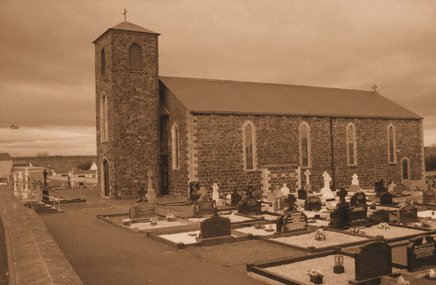Seagoe Parish ~ Griffith's Land Valuations 1864

The Parish of Seagoe forms part of the Barony of Oneiland East and lies due south of Lough Neagh with the Upper Bann as its western boundary. In its original form, Seagoe was extensive, stretching from the Bann bridge, at Portadown, to Silverwood, on Lurgan's town boundary, a distance of six miles. From Hacknahay, in the south of the parish, to Ardmore,in the north, is eight miles. Until the end of the 18th. century, Seagoe took precedence within the Dromore Diocese over Shankill Parish perhaps on account of its greater antiquity as a religious foundation. Even today while gazing from a distance within Old Seagoe graveyard towards the mound on which the old church ruin stands, the outline of the large double-ringed rath, which formed the nucleus of the original foundation, remains visible. David Riley stated that Seagoe was one of the most ancient Christian settlements in Ireland, dating from c.540 A.D. A large stained glass window in Seagoe Church of Ireland depicts Saint Gobha who is attributed with the foundation of the site. The Reverend Bernard J. Mooney wrote, concerning Saint Gobha:
Reeves was the first modern scholar to perceive that the last element in the place-name is a saint's name, Gobha. Nothing is known of this St. Gobha beyond the fact that he was associated with ancient Seagoe (probably as its founder). The fullest reference to him is that given by Colgan citing the Calendar of Cashel, where his name is Latinised Gobanus. The passage may be translated: `St. Gobanus of Killamery (Co. Kilkenny), near the mountain called Slievenaman; or else Gobanus (Goba) of Teg da-goba (Seagoe), on the bank of the Bann, in Iveagh of Ulidia. Whichever of these it is, he was the (spiritual) father of a thousand monks' (Colgan, A.SS.,750b).
In Seagoe, the weaving of linen and associated trades were widely practised. This often took the emphasis off agricultural improvements. This in turn was in part responsible for the small and fragmented nature of many holdings. Seagoe was so large a parish that it held at least four distinctive population groupings, these arising as the result of the nature of the land which differed much from one locality to the other, and also from the major population adjustments which had to be made in the wake of Anglican in-migration in the 1670-1710 period, and the aftermath of the Battle of the Diamond in 1795.
Our thanks to Frank McCorry for the above.
Click on a name on the right to see the records, or type a surname in the search box below.


|

